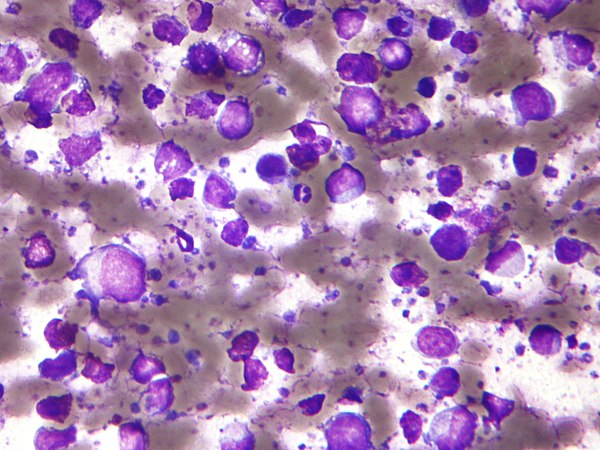By
Guang Yang et. al,.
According to lymphoid malignancies, diffuse large B-cell lymphoma (DLBCL) is the most common type of high-grade non-Hodgkin’s lymphoma. Based on the pm gene expression profiling, DLBCL has been classified into three groups: Germinal center B-cell (GCB), Activated B-cell (ABC) and Primary mediastinal B-cell (PMBL), with a minority of unclassified subtypes.
CHOP, a mixture of several chemotherapy drugs, is a common treatment for DLBCL. However, it has several side-effects such as cystitis, constipation, ileus of the intestine, peripheral neuropathy, and cardiac failure. Therefore, it has become essential to be cautious. Moreover, poor prognosis of recurrence and treatment-resistance has been recognized in over 30% of affected patients. On the other hand, fucoidan, a sulfated polysaccharide extracted from brown seaweed, as reported by several physiologists, has been known to have antitumor/anticancer effect. This study shows us that fucoidan inhibits cell proliferation, causes cell cycle arrest, and induces apoptotic cell death in humans on the cell lines and primary cells of numerous diffuse large B cell lymphoma (DLBCL). It was also assessed that oral administration of fucoidan effectively inhibited tumor growth in a mouse that was transplanted with cancer cells.
(Examination Method and Result)
To investigate the effect of fucoidan on the growth and survival of DLBCL cells, different concentrations of fucoidan were used to treat 6 DLBCL cell lines, namely OCI-LY8, SUDHL-4. DB (GC subtype) and TMD8, U2932, NU-DUL-1 (ABC subtype). The results showed that fucoidan inhibited the growth of each DLBCL cell in the use of over 25 μg/mL fucoidan as shown in Figure 1. Fucoidan induced apoptosis in 3 DLBCL patients but did not affect the viability of normal CD34+ cells as shown in Figure 2.
Additionally, though there is no data to show for it, fucoidan treated OCI-LY8 cells and caused the potential loss of mitochondria membrane, in turn releasing cytochrome C. Thus, a pathway for caspase and activating apoptosis was created. Moreover, the combined effects of several chemo-drugs and fucoidan were also observed. Fucoidan didn’t enhance the efficacy of CHOP (cyclophosphamide, doxorubicin, vincristine, and prednisone) therapy, it significantly increased the anti-DLBCL action of carfilzomib (CFZ) as shown in Figure 3. In the final stages of the examination, OCI-LY8 cell was injected into an immune-deficient mouse and with the administration of 100mg/kg fucoidan into the mouse, a substantial reduction in tumor volume was observed as shown in Figure 4. No difference was discovered in the bodyweight of the mouse between fucoidan treatment and the control group. To conclude, this is the reason we were able to determine that there is a low level of toxicity in fucoidan and its potential use as an antitumor agent.



